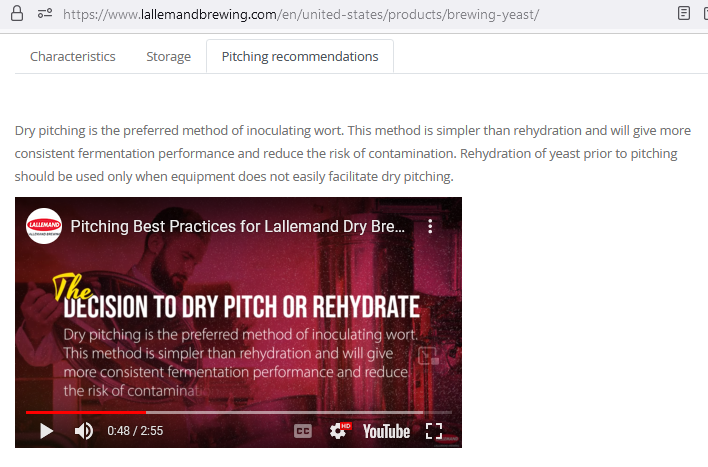PashMaddle
Well-Known Member
- Joined
- Dec 3, 2023
- Messages
- 144
- Reaction score
- 215
I finished my first brew yesterday morning (about 12 hours ago) and I'm not seeing any activity/bubbles etc.
I am well aware that I might just be doing "the thing" and worrying about....well...nothing. But on the off chance that it isn't "nothing", I want to get ahead of it if I can.
What I did...so y'all can tell me what I did wrong:
Made 3 gallons of wort. (whole n'other post about that...it actually went well)
I cooled the wort (with the lid on the system to keep airborne dog hair out... its a thing with my doggos/tile floor combo...) with the wort chiller to around 68 degrees, I remember this because my wife and I stood there and made sophomoric jokes until the temp dropped to 68*. My fermentation temp is 65 but I don't think this would hurt as it is well with in the 59-72 degree range of the yeasties preferred temp.
I'm pretty sure I was good with my sanitation because I sanitized everything in the room except for my wife and the dog (not for lack of trying). There was a significant amount of foam in my fermenter though... but I've been told by pretty much the entire interweb not to fear the foam.
I then, without fear of the foam, pitched a full 11g packet of BRY-97 on top of the foam...no rehydration... just cut it open and pitched them doods. (like a big dummy?)
then I just put it in the fermentation chamber (my fancy name for my raggedy old deep freezer/fermwrap/inkbird combo) set to 65F and went to bed because I was wiped out.
I grudgingly woke up, made coffee and went to the garage and checked the inkbird. The probe is in a thermowell in my bucket lid for accuracy (I have the fanciest 5gal buckets on the block) . It read about 67 point something. I don't know a whole lot about fermentation but I know it generates a little bit of heat so this gave me hope. So, I hopefully lifted the lid of my fermentation system (chamber) to have a look. No activity at all. I pushed on the top of my bucket to see if there was pressure and the liquid bubbled a good bit and, I think, sucked back a bit of sanitizer...lesson learned there
A little while later (30 minutes?) I checked again, it was calm as a Zen monk on a spa day.
Aaaaand now I'm worried.
I apologize for the long post, I'm the only person awake in the house and have nothing better to do than write short stories on a forum about how I may or may not have banjaxed my brew...
My major concerns are:
Not rehydrating my yeast
The fact that I'm using a $5 bucket for a DIY fermenter that might not be airtight.
TL R
R
I'm a noob and didn't rehydrate my yeast and it's not showing activity after 12 hours, tell me to RDWHAHB
I am well aware that I might just be doing "the thing" and worrying about....well...nothing. But on the off chance that it isn't "nothing", I want to get ahead of it if I can.
What I did...so y'all can tell me what I did wrong:
Made 3 gallons of wort. (whole n'other post about that...it actually went well)
I cooled the wort (with the lid on the system to keep airborne dog hair out... its a thing with my doggos/tile floor combo...) with the wort chiller to around 68 degrees, I remember this because my wife and I stood there and made sophomoric jokes until the temp dropped to 68*. My fermentation temp is 65 but I don't think this would hurt as it is well with in the 59-72 degree range of the yeasties preferred temp.
I'm pretty sure I was good with my sanitation because I sanitized everything in the room except for my wife and the dog (not for lack of trying). There was a significant amount of foam in my fermenter though... but I've been told by pretty much the entire interweb not to fear the foam.
I then, without fear of the foam, pitched a full 11g packet of BRY-97 on top of the foam...no rehydration... just cut it open and pitched them doods. (like a big dummy?)
then I just put it in the fermentation chamber (my fancy name for my raggedy old deep freezer/fermwrap/inkbird combo) set to 65F and went to bed because I was wiped out.
I grudgingly woke up, made coffee and went to the garage and checked the inkbird. The probe is in a thermowell in my bucket lid for accuracy (I have the fanciest 5gal buckets on the block) . It read about 67 point something. I don't know a whole lot about fermentation but I know it generates a little bit of heat so this gave me hope. So, I hopefully lifted the lid of my fermentation system (chamber) to have a look. No activity at all. I pushed on the top of my bucket to see if there was pressure and the liquid bubbled a good bit and, I think, sucked back a bit of sanitizer...lesson learned there
A little while later (30 minutes?) I checked again, it was calm as a Zen monk on a spa day.
Aaaaand now I'm worried.
I apologize for the long post, I'm the only person awake in the house and have nothing better to do than write short stories on a forum about how I may or may not have banjaxed my brew...
My major concerns are:
Not rehydrating my yeast
The fact that I'm using a $5 bucket for a DIY fermenter that might not be airtight.
TL
I'm a noob and didn't rehydrate my yeast and it's not showing activity after 12 hours, tell me to RDWHAHB







